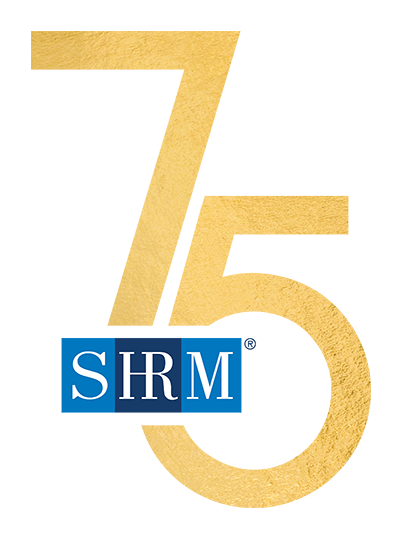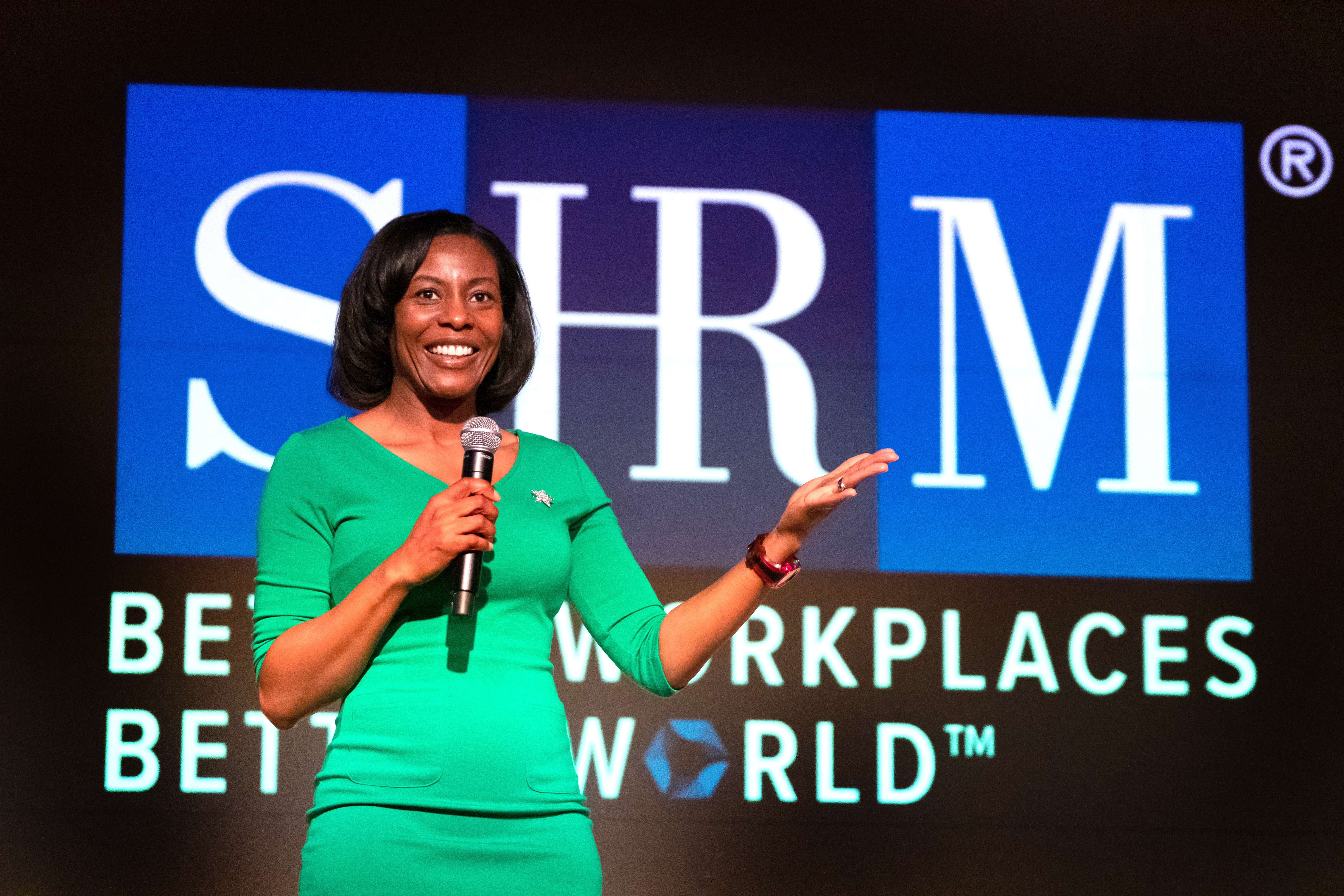

?The number of employment lawyers and HR professionals who focus on compliance has mushroomed over the past several decades as employment laws have multiplied.
“The workplace has changed tremendously over the last 75 years, just as the world has,” says Emily M. Dickens, SHRM’s chief of staff, head of public affairs and corporate secretary.
“In 1948, the workplace in many places was still segregated. It would be another 16 years before the Civil Rights Act outlawed discriminatory hiring practices.”
The Conference Board reported in 1948 that based on data from 25 industries for one week in November, men’s earnings averaged $60.37 and women’s earnings were $40.88; average hours worked were 41.2 and 39, respectively.
Although salaries for women still trail those of men, today’s workplace is more inclusive and diverse than ever.
“So, the biggest changes led by legislation would be in how the workplace now reflects our population,” Dickens says. “This has been accomplished through the Civil Rights Act, the Americans with Disabilities Act and state laws,” among others.
The Early Laws
The first real labor law was the Railway Labor Act of 1926, which initially applied only to the railroad industry, says Roger Quillen, chairman emeritus with law firm Fisher Phillips in Atlanta. The law was extended to the airline industry in 1936.
“This was the first federal statute to govern the employer/employee relationship and provide employees the right to organize for purposes of collective bargaining,” Quillen says.
In 1935, similar protections were afforded to employees in other industries when the National Labor Relations Act was passed.
Then, in 1938, the Fair Labor Standards Act instituted a national minimum wage and required overtime pay.
“For decades, these laws as amended from time to time were the big three governing the working relationship,” Quillen says.

‘A strong compliance program demonstrates to workers that their employer cares about them and chooses to play by the rules.’
ROGER QUILLEN
Quillen was raised in a blue-collar family in northeast Ohio, and his father was a long-haul truck driver and active member of Teamsters Local 90 in Canton.
“I remember waking to the sound of his voice on the phone with his union steward on Saturday mornings as they discussed contract issues or strike planning,” Quillen says. “Even as a child, I found that fascinating.”
Later, Quillen paid his way through college by working as a vacation replacement worker in local unionized factories.
“I continued to be fascinated by the law of the shop and the role of union stewards in enforcing collective bargaining agreements and resolving disputes,” he says. “By the time I was applying to law schools, I knew I wanted to be a labor lawyer, which is what all employment lawyers were called in those days.”
The irony is not lost on Quillen that despite his union-side background, his 40-plus-year legal career has been with one of the country’s best-known management-side workplace law firms, which he led for 23 years as chairman and managing partner.
Room for Improvement
There is still much work to be done to ensure employers are fully using and supporting their entire labor force and considering untapped talent pools for employment, says Craig Leen, an attorney with K&L Gates in Washington, D.C.
Having a daughter with autism has helped Leen understand “how far as a society we need to advance to realize full disability inclusion in all aspects of life, including in the workplace.”
Leading the Office of Federal Contract Compliance Programs from 2018 to 2021 also gave Leen a unique vantage point as to how important it is for companies to adopt proactive diversity, equity, inclusion and accessibility programs and conduct proactive pay equity self-audits, he says.
Emily M. Dickens, SHRM’s chief of staff, head of public affairs and corporate secretary, says there needs to be a federal framework for paid leave.
“There are too many variations from state to state that negatively impact business,” she notes.
Dickens adds that other needed improvements in employment law include:
- Adoption of federal standards for artificial intelligence implementation. “We must ensure that the use of artificial intelligence in hiring does not perpetuate biases against certain groups, while also making sure businesses and HR practitioners are able to use this technology,” she says.
- Enactment of federal standards for pay transparency. “Over the last few years, eight states and at least one city have passed pay transparency laws,” Dickens says. “Compliance varies from state to state, making it difficult for multistate companies to comply and for workers to get a clear picture of compensation.” —A.S.
Anti-Discrimination Laws Passed
The biggest change in employment law came with the passage of the Equal Pay Act in 1963, followed quickly by Title VII of the Civil Rights Act of 1964, Quillen says. In 1967, the Age Discrimination in Employment Act was enacted.
“These inaugurated a federal regulatory interest in something beyond wages, hours, working conditions and collective bargaining,” he says. “Then and forever after, federal laws have increasingly focused on preventing discrimination in the workplace.”
In 1970, the Occupational Safety and Health Act was enacted to protect employees from unsafe working conditions.
“The law requires employers to provide their employees with working conditions that are free of known dangers,” Dickens says.
Also in the early 1970s, the U.S. Supreme Court issued a decision applying the theory of disparate impact to a company’s job transfer requirements. A new theory of liability was available to employees, who could now challenge policies that had a discriminatory adverse effect, not just acts of disparate treatment.
The Employee Retirement Income Security Act was enacted in 1974, while COBRA passed in 1985, adding benefits compliance obligations to employment law duties.
There was lax enforcement for years—not the volume of employee litigation that employers see now—with wrongful-termination lawsuits first arising in California, then spreading across the country, says Scott Rechtschaffen, chief knowledge officer and an attorney with Littler in San Francisco.
In the 1990s, employment law had another resurgence, with the enactment of the Americans with Disabilities Act in 1990 and the Family and Medical Leave Act (FMLA) in 1993.
LaKeisha Caton, an attorney with Pryor Cashman in New York City, says she became interested in employment law in part based on a conversation with her mother, who said she didn’t have the benefit of job protection when she was pregnant, despite working for a large employer, because the FMLA had yet to go into effect.
“This was a law that I had simply taken for granted, not realizing just how recently it had been enacted,” Caton says. “This story symbolizes what continues to draw me to employment law—the fact that it is always evolving in order to address the needs of a dynamic workforce.”
Congress recently passed the Pregnant Workers Fairness Act, which requires employers to provide reasonable accommodations for workers with medical conditions related to pregnancy and childbirth.
State and local laws on a variety of workplace-related topics have made compliance more complex for employers, particularly multistate employers.
“Forty years ago, labor and employment law was by far mostly a federal practice, but employers operating in multiple states now face the challenge of keeping up with varied and sometimes inconsistent local laws and regulations,” Quillen says. “This makes compliance extremely difficult, even as the financial risk of noncompliance multiplies.”
San Francisco alone has 23 different minimum wages, Rechtschaffen notes.
The recent rise of remote work and use of artificial intelligence are examples of how the workplace has changed over the past 75 years, Rechtschaffen adds, noting that some of those changes have resulted in new laws, particularly at the state and local levels.
Better Conditions
The workforce has changed due in no small part to the evolution of employment laws.
“The workplace is infinitely better than 75 years ago—more diverse and dynamic and much safer, with significantly greater likelihood that equal employment opportunity principles will be observed,” says Craig Leen, an attorney with K&L Gates in Washington, D.C., who was director of the Office of Federal Contract Compliance Programs from 2018 to 2021.
Caton notes that the number of women in the workforce today is significantly higher than it was 75 years ago.
“The workplace is also more conducive to the voicing of grievances,” she says, “as many employers have HR departments with which employees can raise complaints, and there are various federal, state and local agencies that were created for the purpose of enforcing employment laws on behalf of workers.”
Benefits of Compliance
Noncompliance opens a company to charges, lawsuits, trials and other potentially expensive procedures and payouts, Quillen observes.
“In today’s environment, workplaces are the No. 1 target for many highly capable plaintiffs’ attorneys, and the costs of defending and settling claims have skyrocketed,” Quillen says.
Compliance with workplace laws and regulations lowers a company’s legal risk.
“Noncompliance may also open the door to union organizing,” Quillen adds. “A strong compliance program demonstrates to workers that their employer cares about them and chooses to play by the rules. It fosters a culture of trust and can boost recruiting, retention and employee satisfaction.”
Allen Smith, J.D., is SHRM’s manager of workplace law content.
Illustration by Valerie Chiang.
Driving Change
An interview with Emily M. Dickens, chief of staff, head of public affairs and corporate secretary for SHRM.

How is SHRM driving change in employment law to create better workplaces and a better world?
With the reach of our membership, we impact 235 million workers in 165 countries. We have a mandate to be a thought leader in the labor and employment space, and through our public affairs work, we impact and influence legislation on the local, state and federal levels.
A recent success concerns health care: SHRM successfully advocated for Congress to extend and reinstate pre-deductible coverage [also known as first-dollar coverage] in telehealth because it allows employers to cover telehealth services without a plan participant having to first pay their co-pay or deductible, minimizing out-of-pocket costs for workers.
SHRM has also launched the Generation Cares coalition, which will build solutions to the difficulties our country has when it comes to caring for older adults, children and the disabled population.
What else is SHRM working on?
We are partnering closely with the U.S. Equal Employment Opportunity Commission and U.S. Department of Labor to ensure that employment law supports skills-based hiring that better recognizes the knowledge, skills and abilities of all workers regardless of where they learned. SHRM collaborated with the federal government, our nation’s largest employer, to support the governmentwide adoption of skills-based hiring. This will expand access to economic opportunity for millions of workers who may otherwise have been overlooked.
SHRM is the leading voice on modernizing the employment verification process and has been successful in advocating for the U.S. Department of Homeland Security to extend the remote verification of I-9 documents during the onboarding process. SHRM members ensure that they are employing workers legally authorized to work in the U.S. while navigating the current landscape of remote employment. That landscape necessitates a permanent change to the current “in-person” document inspection requirements. Remote inspection would promote workplace flexibility and the health and wellness of HR professionals.
What benefits issues are critical?
The ability to offer employer-provided benefits is important to workers and businesses. Recognizing that we need the legal framework to offer these benefits, we are working with Congress to ensure that employers can expand access to mental health services through employer-provided health insurance at no cost to workers and to change the Fair Labor Standards Act to expand access to child and elder care benefits. With many workers struggling with college debt, we successfully championed the passage of federal legislation that more easily allows employers to repay student loan debt without increasing the tax burden on the worker. We are also continuing to work with states to create consistency between state and federal tax law.
SHRM will continue to advocate for policies that benefit the work, workers and workplace.
What made you want to get involved in employment law and public policy?
My mom worked for the city of New York for 33 years. She was an active union member and today benefits from the full pension provided as part of her benefits package. However, it was difficult for her to move up because of the civil service exams process. I remember she took so many tests and passed many of them. But the process was cumbersome, and even if you scored well, there was no guarantee of a new job. To me, this was an issue of access. I spent most of my career lobbying for access to higher education because it creates more opportunities for work, and now I get to promote policies that make work more accessible. —A.S.
 ? ? |
Up Next 401(k)s, HSAs and employee choice have transformed the employee benefits landscape. READ MORE ? |

